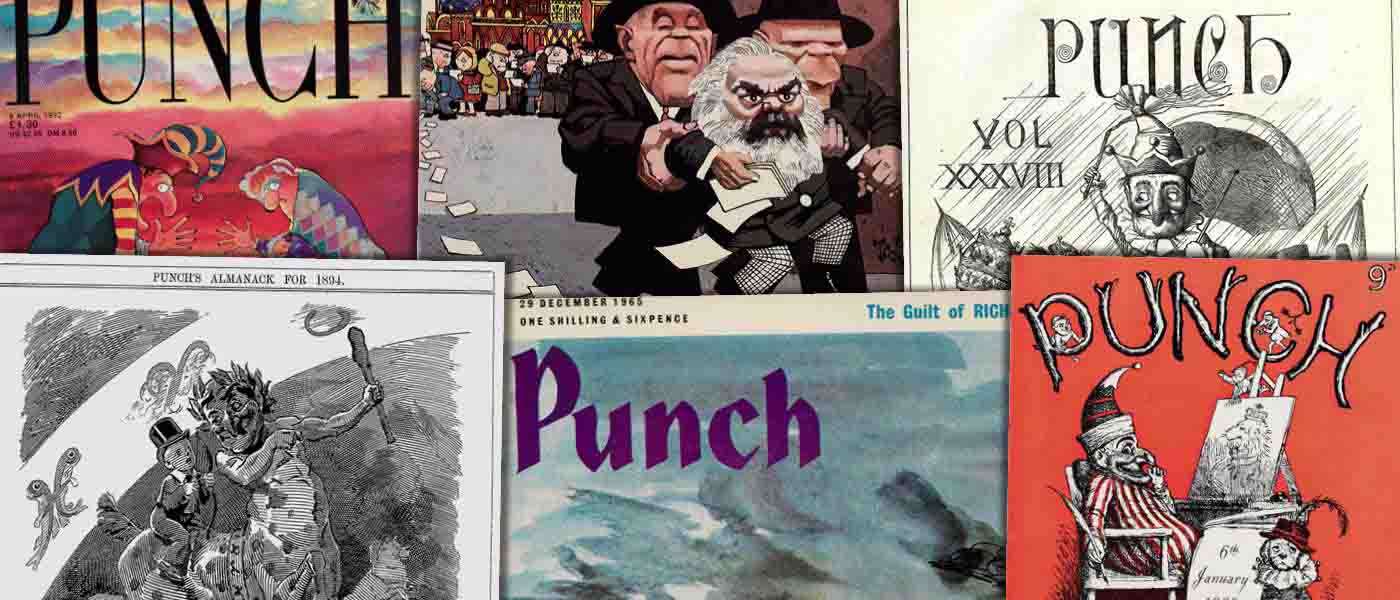Introduction
I have used Punch on a second level module entitled "Research Methods for Media, Culture and Communication" as part of a BA (Hons) Media, Culture and Communication degree at Liverpool John Moores University, UK. Student activities involved not only working with Punch as a primary source in and of itself but also evaluating the process of building an archive and comparing the merits of using digital resources to traditional hard copy research.
Here is the introduction to the session from the Module Handbook:
4th October Print Culture and the News Industry
Punch Archive (Special Collections ARC)
Our case study for the study of print culture is 'The Great Stink of 1858' which was a turning point in over twenty years of campaigning for sanitary reform. Themes of social proximity and class tensions divided the popular press as to who was actually responsible for clearing the City's streets. Drawing on a range of materials from across the periodical press (from our Cengage Learning digital collections as well as our physical archives) this session encourages students to consider the variety of communication strategies that were deployed. You will also be asked to reflect on the comparative pros and cons of the digital archive and the physical.
Questions Students Were Asked to Discuss
Workshop Questions:
- What is your first impression of Punch? What kind of publication do you think it was? What kind of reader do you think it was aimed at?
- What is and is not included in the Gale digital archive of Punch?
- How does the hard copy of Punch compare to the images from the digital archive?
- What can we learn about the process of building an archive? What are the pros and cons of the digital form over using hard copies of newspapers/periodicals? (NB you will be working with physical copies of Punch in the Special Collections Reading Room to enable you to discuss this point. The Gale digital archive will be up on the main screen for you to draw comparisons.)
- Why is this additional information necessary for developing research questions?
- Using the railways/public health as a case study, how would you proceed with writing a research question for the assessment?
- How would you begin to develop a bibliography? What type of sources could you use in conjunction with your findings from the digital archive?
- How would you prepare this for publication on the Punch and the Victorian Periodical Press website?
- What material would you include and why? How would this help other students to use Punch as a source for studying satire as a form of communication?
Further Activities/Assessment
Assessment Question for the Module: choose one from the following archives that we have studied on the module and produce a discussion of its potential as evidence for Media, Cultural and Communication studies:
- Punch Archive
- Mass Observation Database
- Liddell Hart Collection of Costume (LJMU Libraries)
- 'England's Dreaming' - The Jon Savage Punk Archive (LJMU Libraries)
- From your analysis of this archive, identify a research question which is appropriate for communication studies
- Discuss your choice of research area with direct reference to documents or artefacts within the archive
- Outline how you would proceed with your research
- Provide a supporting bibliography and comment on previous relevant or complementary research
- Consider the format in which you could present your findings (digital/hard copy/essay, etc.)
Challenges and Findings
Generally this exercise has always worked well with students, and external examiners have been very positive in their comments about the module as a whole. Students are struck by the format of Punch and how similar it is to a newspaper layout - something they did not feel was apparent from using the digital archive alone. I have found that glitches in technology can impede the success of the session, particularly if students have had difficulty accessing the digital archive to prepare for the seminar. Equally, if the server goes down when you are doing a live demonstration it can be very frustrating. However, there are a number of sites such as archive.org that have sample copies of Punch so I suggest having alternative sites you can refer to until the main site, in this case, the Gale archive, is restored. However, there is no substitute for using the complete Gale archive which has full layout and content provision available for analysis.
With students who proceed well with the task, there is also the opportunity to take them into Gale’s newspaper cross-search platform, and ask them to begin to undertake comparative analysis of a given event. My own personal research interests on the Great Stink work well for studying Punch, but I would suggest a more internationally recognisable event such as the Great Exhibition of 1851 for an exercise across multiple newspapers. Looking at the variety of representations of one event across different publications really helps students to begin to understand the finer nuances of satire and how effective a tool of communication this can be.

CITATION: Horrocks, Clare: "Case Study: Nineteenth Century Punch in the Seminar Room." Punch Historical Archive 1841-1992. Cengage Learning 2014





